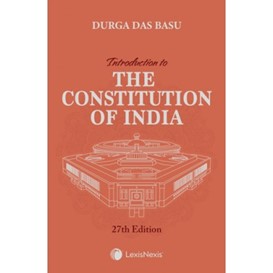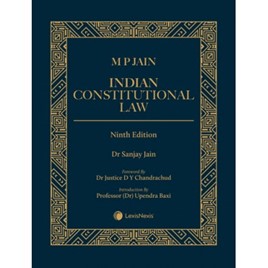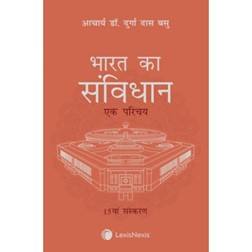Decoding The Colloquialism Of NJAC vs. Collegium System : The Appointment Of Judges In India

The Supreme Court of India has a sanctioned strength of maximum 34 Judges. The apex court is established as per Article 124 of the Constitution, and at the inception, the strength of the Justices of the Supreme Court was sanctioned to a total of 8 (i.e. CJI + 7 other Judges). The strength of the number of Judges is regulated as per The Supreme Court (Number of Judges Act), 1956. At present the apex court is running with 33 Judges (CJI + 32 Judges).
Along with this there are 25 High Courts in India (Established under Article 214 of The Constitution of India).
As per the provision of the Constitution, the Supreme Court Judges are appointed by the President under Article 124 on the recommendation of the collegium and similarly the High Court Judges are appointed as per Article 217 of the Constitution of India. However, the usual debate and discussion over the Collegium vs. the NJAC (National Judicial Appointment Commission) system continues. Let us, through this blog, understand the role, functioning and nuances of the Collegium system and the National Judicial Appointments Commission, and its infamous conflict.
Constitutional Provisions & Significance of Judicial Appointments vis-à-vis Independent Judiciary
Article 124 of The Constitution of India deals with the establishment and constitution of the Supreme Court and provides for the appointment of Judges in the Supreme Court of India.
As per Article 124(2)-the Judges of the apex court are appointed by the President of India and the Supreme Court Judges hold the office till the age of 65 years. The appointment is to be made after due consultation with such Judges of the Supreme Court and of the High Court, as the President would consider necessary.
Article 124(3) provides for the essential eligibility criteria for the appointment, according to which the person should be a citizen of India and should fulfil either of these criteria i.e. a person should be-
- High Court Judge (for at least 5 years) or two or more courts in succession.
- An advocate of the High Court (for at least 10 years) or two or more courts in succession.
- A distinguished jurist, as per the opinion of the President of India.
Article 217 of The Constitution of India deals with the appointment of the High Court Judges in India. As per Article 217(1) – the Judges of the High Court shall be appointed by the President of India, on consultation with the CJI and the Governor. In case of appointment of any of the Judges of the High Court (except in case of Chief Justice of the HC), the Chief Justice of the respective High Court shall also be consulted.
Article 217(2) provides for the eligibility qualifications for appointment of High Court Judges, according to which the person should be a citizen of India and should fulfil either of these criteria i.e. a person should be-
- The person has been a judicial officer for at least ten years.
- The person has been a High Court advocate or two or more such courts in succession.
Hence, these posts are constitutional posts and appointments to these posts are made duly under and as per these constitutional provisions. Judiciary is one of the three pillars of democracy, along with the legislative and the executive. Considering its role and position in the structure, the functionality, the appointment, and the need to maintain separation of powers- the process of appointment and ensuring that this process is fair and impartial, is of immense foundational significance.
Collegium System
The Collegium system, in factual terms and as an express legal provision, does not find its place in the Constitution of India and has rather evolved in India as a process of appointment of judges, by three prominent cases.
Article 124 and Article 217 provide that the SC and HC judges, respectively, are appointed by the President of India after consultation with such Judges of Supreme Court & High Court as necessary, along with the mandatory consultation with the CJI.
As per the present process of appointment, the collegium headed by the CJI has primacy in appointing Judges to the higher judiciary. CJI and 4 other senior most judges make recommendations for the appointment of SC Judges, Chief Justice of HC and transfer of HC Judges. As for other Judges of any high court, appointments are made by the President in consultation with the High Court Collegium and the CJI (who consults the SC Collegium) and the Governor of that particular state.
The collegium system in India for Judicial appointments (SC & HC) has evolved and developed via significant judicial pronouncements.
The Three Judge Cases that shaped this process are–
First Judge Case –
SP Gupta vs. UOI (1981) (AIR 1982 SC 149)– The court by this gave the executive, a decisive hand for appointment of Judges for SC & HC. Bench went on to interpret that the term ‘consultation’ under Article 124 and Article 217, did not mean ‘concurrence’.
Second Judge Case-
Supreme Court Advocates-on-Record Association v. Union of India (1993) (AIR 1994 SC 268)– 9 judge bench of Supreme Court in 1993, reversed the earlier decision. The apex court held that ‘consultation’ with the CJI actually meant ‘concurrence’ of the CJI. Following this, the CJI would make a decision along with the 2 senior most judges of the court and hence paved the collegium system.
Third Judge Case–
IN RE: APPOINTMENT & TRANSFER OF JUDGES (1998) (AIR 1999 SC 1)– In 1998 the President sought the Supreme Court’s opinion over the primacy accorded to the CJI in Judge’s appointment under collegium. Supreme Court upheld the stance and went on to increase the strength of collegium to 5 judges
Following this, the collegium consists of the 4 senior most judges and the CJI (i.e. Total 5 members). Another possible contingency is that the successor of the CJI may not be one of these 4 senior most judges and in those cases he is made a part of the collegium as well.
As for the High Court collegium – it is led by the Chief Justice of the high court and the four senior most Judges of that particular High Court. The recommendations by the High Court collegium are further approved by the CJI and the Supreme Court Collegium and are then sent to the President.
The governments’ hand and power in this process is limited to conducting inquiry through Intelligence Bureau, and the government, in turn, can raise objections and call for clarification on that basis. However, if the collegium reiterates its recommendations, then the government is bound to make the concerned appointments.
However, the collegiums system is often criticised and questioned as being arbitrary or biased, for being a process where Judges are being appointed by the Judges themselves. Critics often question this process as being unconstitutional, undemocratic, opaque, unaccountable, inefficient and being maligned by nepotism. One of the objections being that constitution nowhere provides for such a system of appointment. Collegium system may have its own loops to jump, as the system gives no objective guidelines for the selection and hence leaves a scope for favouritism.
National Judicial Appointment Commission
Following the provisions of the Constitution and the judicially evolved system these judicial appointments were made as per the Collegium System (as discussed earlier in this blog).
However, later came in the National Judicial Appointment Commission (NJAC). NJAC was brought in to replace the collegium system by the 99th amendment to the Constitution of India i.e. Constitution (Ninety-ninth Amendment) Act, 2014 . NJAC consisted of CJI, 2 senior judges of the SC, Union law minister and 2 eminent persons (i.e. these 2 eminent person are nominated by a committee composed of the Prime Minister, the Chief Justice of India and the Leader of the Opposition in the House of People or if no such Leader is there then the Leader of the single largest Opposition Party in the Lok Sabha).
As per the appointment procedure that previously existed in the form of the National Judicial Appointment Commission (NJAC), no recommendation made by the NJAC could be forwarded if it was denied by two of its members. The commission (NJAC) and the NJAC Act were stuck down back in the year 2015 via the 4th Judge Case (Supreme Court Advocate on Record Association & Anr. vs. UOI) ((2016) 5 SCC 1), declaring it to be ultra vires and against the basic structure doctrine of the constitution. Invalidity to this appointment system was accorded on account of it being against the rule of ‘Separation of Power’ (as between the Executive and the Judiciary), as it gave an equal power of appointment to the executive organ by the virtue of the composition of the commission (NJAC). NJAC in effect and as per the power equation, blurred the separation of organs and was an overstepping leap.
Moreover, as far as transparency is concerned, NJAC left a vicious subjectivity in deciding who were supposed to be the ‘eminent persons’ that were to be a part of the NJAC. In effect, the system would have been led by a majoritarian view which cannot be equated to a legal or a judicial view, as such.
Present Collegium System
Chief Justice B R Gavai, Justice Surya Kant, Justice Vikram Nath, Justice J K Maheshwari and Justice B.V. Nagarathna. Justice Nagarathna has officially joined the Collegium, after Justice Abhay Oka’s retirement. This marks itself as a significant representation as Justice Nagarathna is set to become the first woman Chief Justice of India in the year 2027.
Conclusion
Concluding, against all this criticism, the fact is that the collegium system withstands and maintains the rule of separation of power and the independence of the judiciary. It may need its own improvement and lens of transparency, but that doesn’t call for an absolute overthrow or disregard of this system of appointment. CJI’s opinion, in practice, is rather a collective opinion by people at the apex court level. CJI is given the decisive lead as he would be best to know and scrutinize the candidates & is backed by the extensive scrutiny by the collegium. The real solution lies in resolving the flaws and filling the gaps and work on every inch of its efficacy and adopting efficiently objective criteria of functioning.
Read and explore more with choicest of LexisNexis Titles-
Constitution Bare Act-
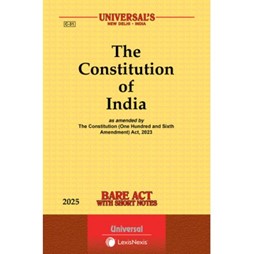
Bare Act (i.e. the Bare Text of the Constitution) is a must have resource for your reference and understanding of The Constitution of India.
The Basic Structure Doctrine: Protector of Constitutional Integrity by Rohinton Nariman
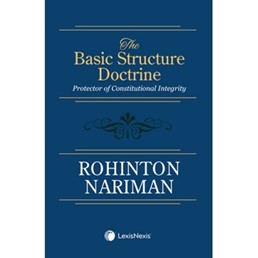
A visionary voice on landmark doctrine. It is a seminal piece of work, which explores the evolution of the constitution and the Basic Structure Doctrine along with the pivotal amendments, judicial perspective and the aspect of constitutional integrity. It gives you a structured build up to the landmark Kesavananda Bharati Case with a sound logic.
D D Basu’s Introduction to the Constitution of India (Constitution of India Book)–
A classic and reputed reference book that thoroughly covers the provisions and aspects of The Constitution of India. A reader friendly text that can serve as a reference book for general readers, politicians, journalists, administrative authorities, UPSC aspirants, political science students, lawyers or law students. The book covers the historical aspect of the Indian Constitution along with legislative changes and is updated with recent constitutional amendments.
Indian Constitutional Law by M P Jain (9TH Edition)-
A definitive and evergreen commentary on the Indian Constitutional Law. The legal commentary is rigorously updated with systematically structured text. The book provides critical legal insights on the recent significant judgments over the subject.
Bharat Ka Samvidhan–Ek Parichaya (Hindi Translation) by D D Basu–
A hindi translation of the classic reference book dealing with the Constitution of India by D D Basu. A seminal work on the subject in hindi covering the origin and evolution of the Indian Constitution. The book caters to a broader spectrum of reader with its lucid language like general readers, politicians, journalists, administrative authorities, UPSC aspirants, political science students, lawyers or law students. The book covers the historical aspect of the Indian Constitution along with legislative changes and is updated with recent constitutional amendments

